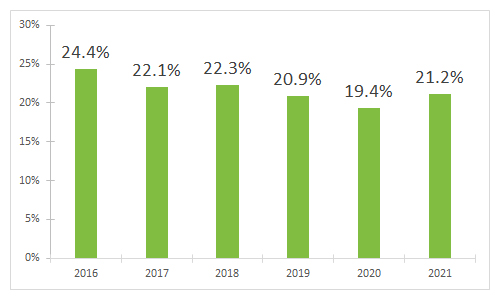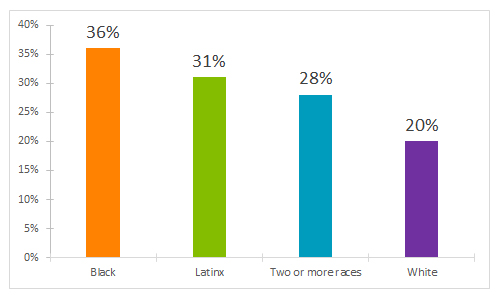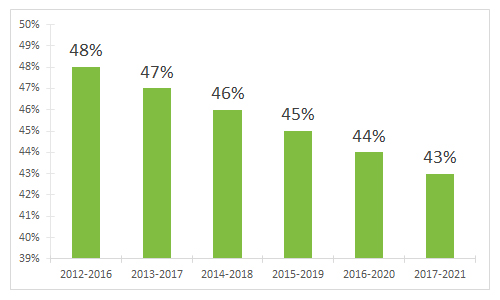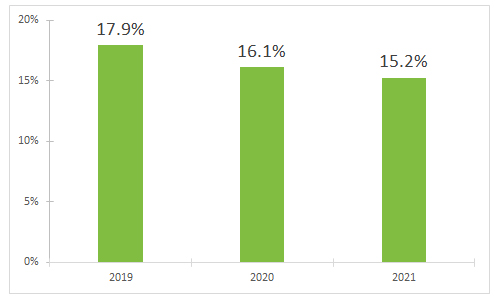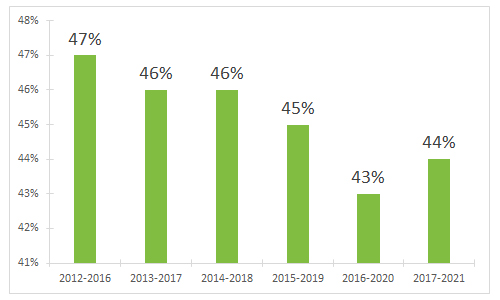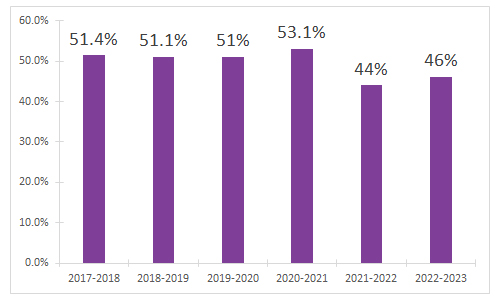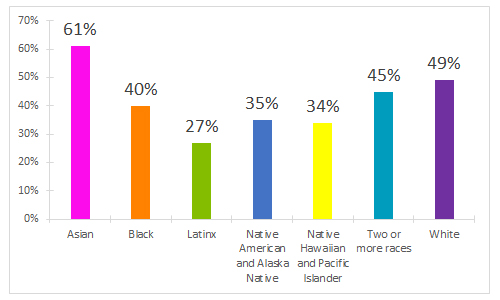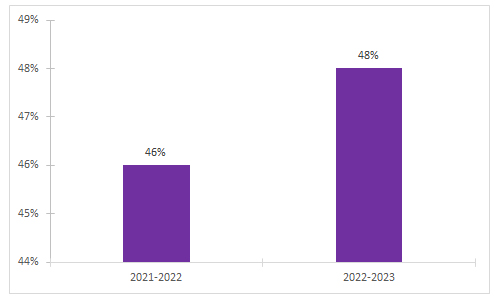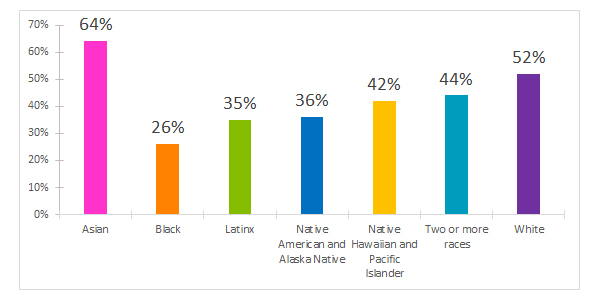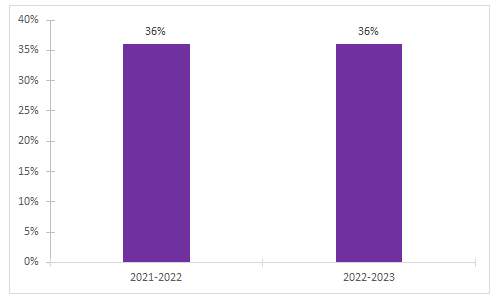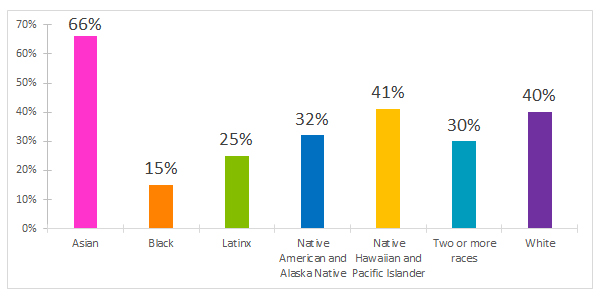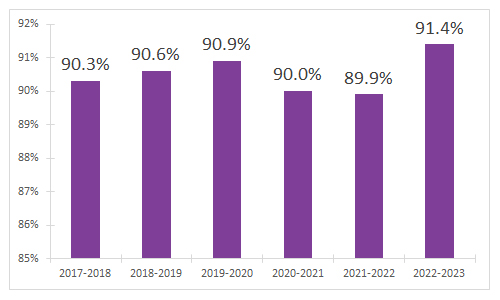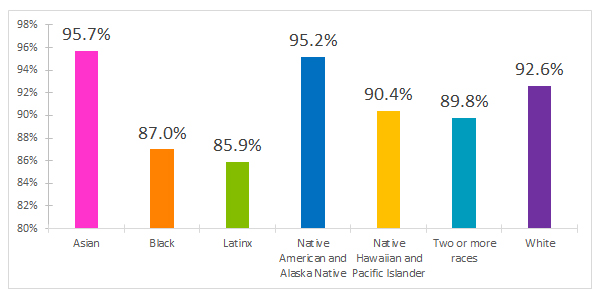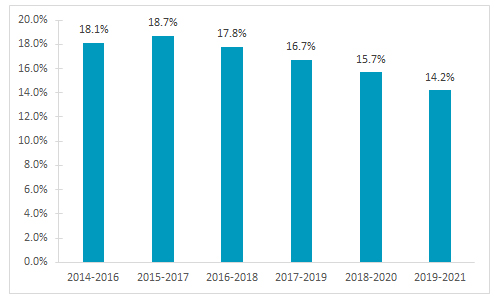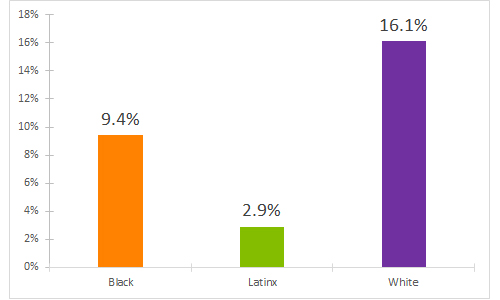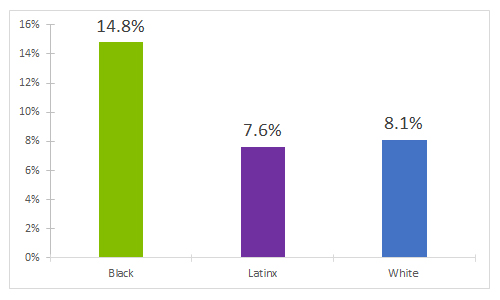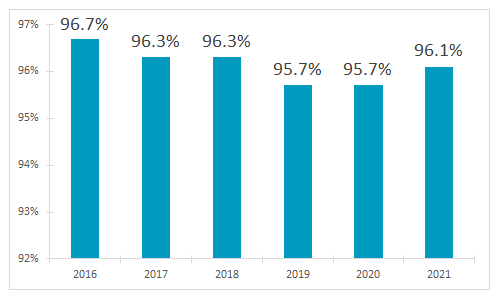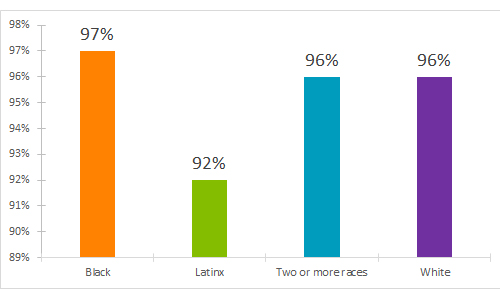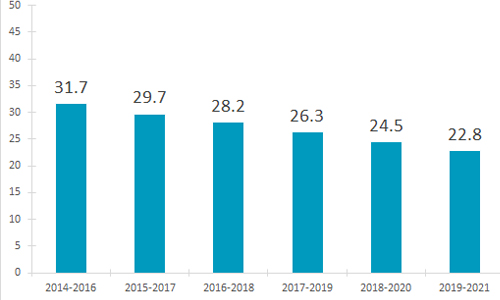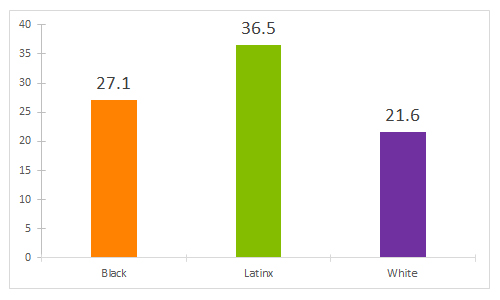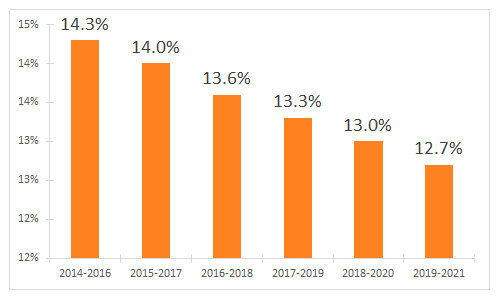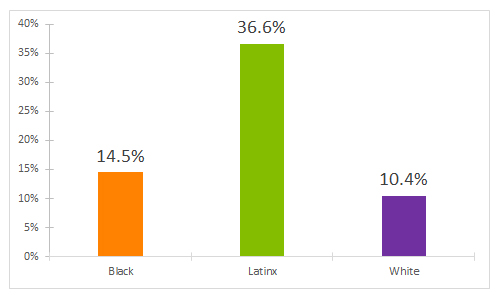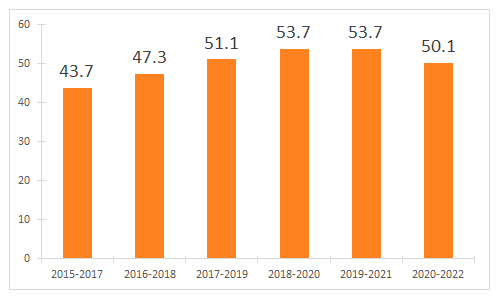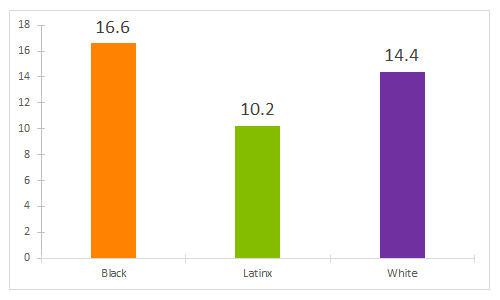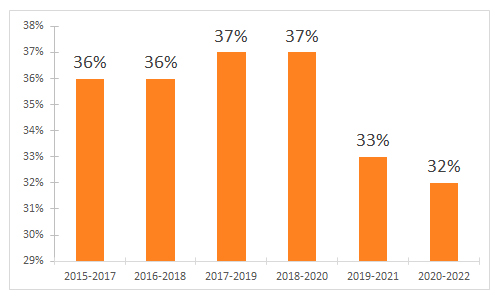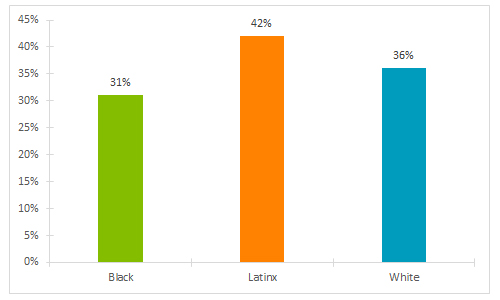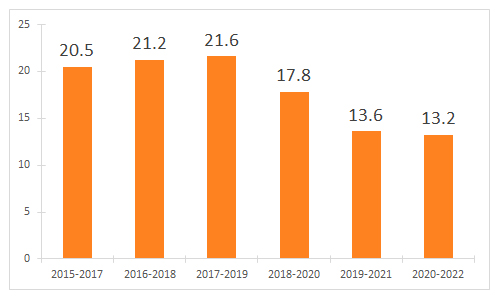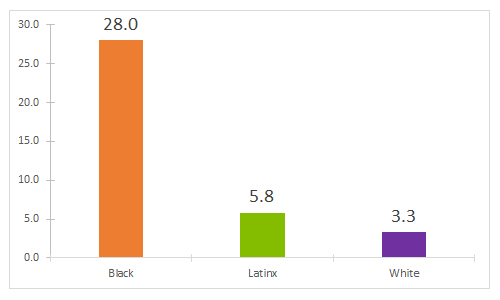2023 Kentucky KIDS COUNT Data Dashboard
Please visit this page from a desktop browser to view our interactive data dashboard
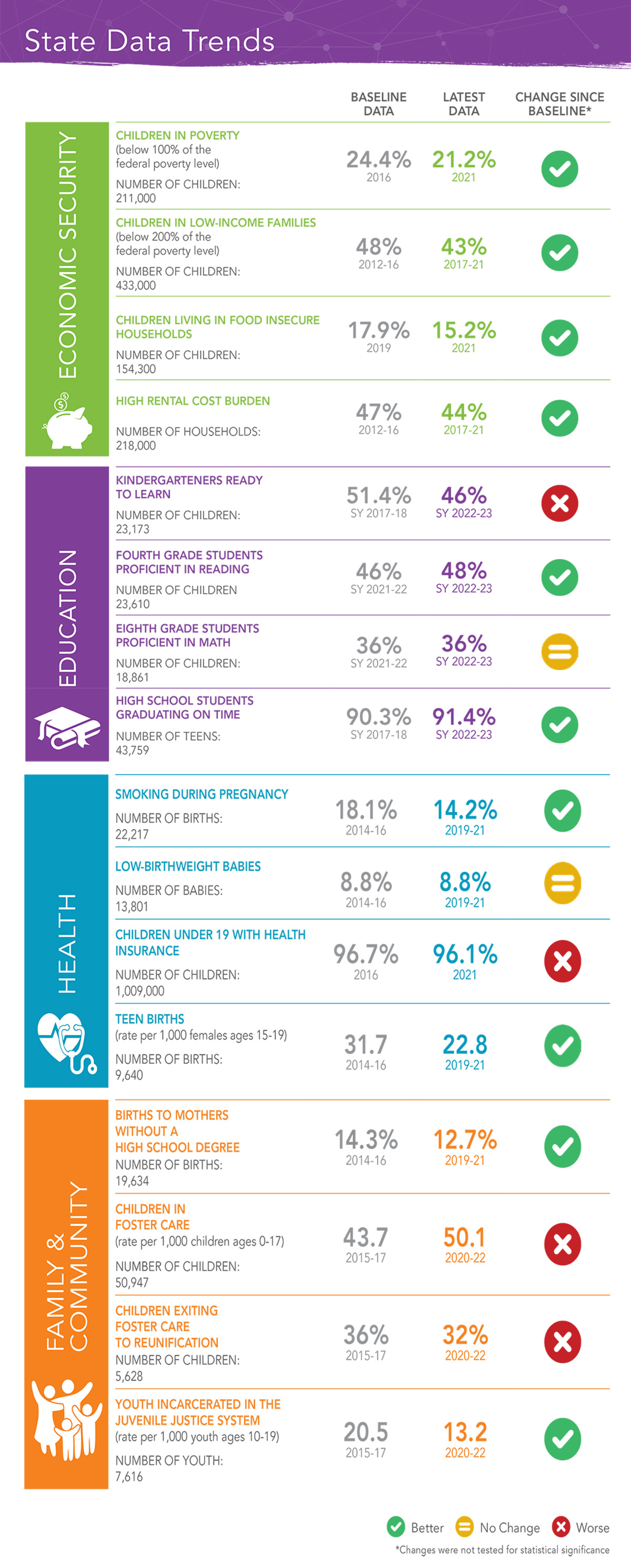

ECONOMIC SECURITY
Baseline Data
Latest Data
Change Since Baseline*
Data by Race/Ethnicity
CHILDREN IN POVERTY
(below 100% of the federal poverty level)
NUMBER OF CHILDREN: 211,000
24.4%
2016
21.2%
2021
CHILDREN IN LOW-INCOME FAMILIES
(below 200% of the federal poverty level)
NUMBER OF CHILDREN: 433,000
48%
2012-16
43%
2017-21

EDUCATION
Baseline Data
Latest Data
Change Since Baseline*
Data by Race/Ethnicity
FOURTH GRADE STUDENTS PROFICIENT IN READING
NUMBER OF CHILDREN: 23,610
46%
SY 2021-22
48%
SY 2022-23

HEALTH
Baseline Data
Latest Data
Change Since Baseline*
Data by Race/Ethnicity

FAMILY & COMMUNITY
Baseline Data
Latest Data
Change Since Baseline*
Data by Race/Ethnicity
CHILDREN IN FOSTER CARE
(rate per 1,000 children ages 0-17)
NUMBER OF CHILDREN: 50,947
43.7
2015-17
50.1
2020-22
YOUTH INCARCERATED IN THE JUVENILE JUSTICE SYSTEM
(rate per 1,000 youth ages 10-19)
NUMBER OF YOUTH: 7,616
20.5
2015-17
13.2
2020-22
Data Dashboard updated November 2023

